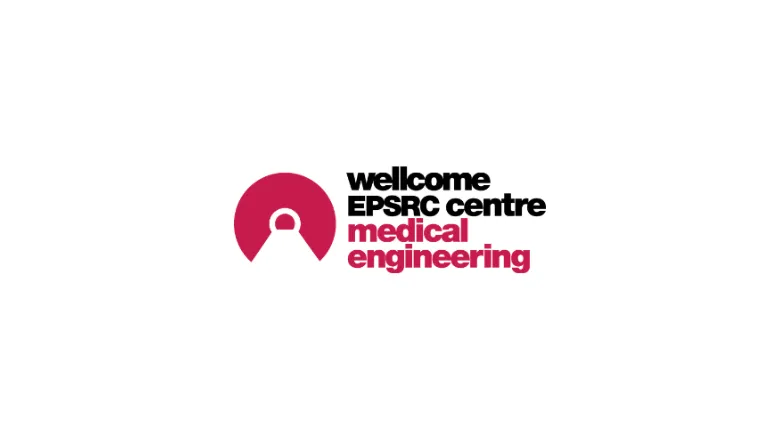27 February 2019
Recipients of the Centre for Medical Engineering Pump-Priming Scheme Awards Announced
The Wellcome/ESPRC Centre for Medical Engineering (CME) has selected seven successful projects for the 2018 Pump-Priming Scheme Awards.

The Wellcome/ESPRC Centre for Medical Engineering (CME) has selected seven successful projects for the 2018 Pump-Priming Scheme Awards. This internal competition awards a share of up to half a million pounds aimed at highly innovative work in clinical challenges that would not easily be supported by conventional grant funding.
The projects awarded all address critical questions within the Centre’s Research Themes (Physics and Engineering, Computer Science and Chemistry) and Clinical Challenges (Cardiovascular, Neurology and Cancer), with a focus on feasibility.
Recipients of the Pump-priming Scheme awards and their focus areas are as follows:
- Jana Hutter & Pablo Lamata (Project): ‘Detecting risks created during pregnancy (the placenta - heart axis).’ Pre-eclampsia affects about 1 in 25 pregnancies. It can cause severe problems for the mother such as fits, bleeding, heart problems later in life, and even death. The baby can be affected by a poorly functioning placenta, which leads to inadequate nutrition and thus to low birthweight with associated risks or even death. We aim to reduce the impact of this condition by a better understanding of the health of the mother’s heart and placenta, and how they affect each other. By working with cutting-edge imaging and computational technologies we hope to define strategies of effective surveillance and therapy planning.
- Teresa Matias Correia (Fellowship): ‘Fully quantitative high-resolution free-breathing first-pass perfusion cardiac MRI for assessing myocardial ischemia.’ Quantitative first-pass perfusion cardiac magnetic resonance imaging (FPP-CMR) is an emerging safe and non-invasive test for detecting coronary heart disease, the most common type of heart disease. However, FPP-CMR requires ultra-fast scans whilst patients hold their breath, leading to a trade-off between spatial resolution and heart coverage. This project aims to develop an automatic image reconstruction strategy based on mathematical models of cardiac blood flow, for accurately quantifying myocardial perfusion from accelerated acquisitions (to collect more information) performed without patients having to hold their breath. This method will generate images with improved resolution and heart coverage and, hence, greater diagnostic accuracy
- Colm McGinnity (Fellowship): ‘Quantification of brain stiffness via magnetic resonance elastography in refractory focal epilepsies.’ Epilepsy is a very common brain condition that affects roughly 500,000 people in the UK. Despite medication, around one in three people with epilepsy continue to have seizures. If doctors can find out where exactly in the brain the seizures begin, this area can sometimes be removed by surgery. This project will test a new type of brain scan to measure brain stiffness, in hope that this new type of scan can help with finding the area where seizures start.
- Kavitha Sunassee (Project): ‘Assessment of novel particle platform technology (for tracking cancer cells and nuclear delivery of Auger Emitting Radionuclides for therapy).’ A viral structural protein when mixed with small single-stranded pieces of DNA (ODNs) spontaneously self-assembls into spherical particles in the test-tube. If a fluorochrome-tag is attached to the ODN, these particles can be seen using a fluorescent-microscope. When these particles are fed to cells in culture, they are gobbled up and they remain inside the cells for >8 days. These internalised particles can be triggered to disrupt, such that particle components disassemble and flood the nucleus (home of DNA). Attaching radioactivity to particle components would allow us to track tumour cells as they divide (tracking cell spread) but also deliver radioactivity specifically to the nucleus to kill cancer cells.
- Rui Teixeira (Fellowship): ‘Establishing MRI as reproducible and motion robust measurement tool.’ Currently images acquired using MRI tailor signals to specific brain tissue properties but are not easily comparable across scanners. Quantitative MRI seeks to change this, however it is fraught with lack of reproducibility, vulnerability to motion and unacceptably long acquisition times. This proposal aims to optimise a detailed and reliable MRI acquisition method that is able to measure 3 brain tissue properties at high spatial resolution, all within a 15min examination, even if the subject moves. Achieving this will provide more detailed and reproducible clinical information in a shorter period of time, thereby revolutionising the current state-of-the-art.
- Marta Varela (Fellowship): ‘Predicting the outcome of atrial fibrillation patients using CINE-MRI and convolutional neural networks.’ Before undergoing treatment, atrial fibrillation (AF) patients often have a dynamic MRI scan to assess how patients’ atria deform across the cardiac cycle. Atrial deformations are known to be subtly different in patients with more advanced forms of the disease compared to those who respond well to treatment. Although dynamic MRIs are inspected visually by cardiologists, Artificial Intelligence (AI)programs are better at classifying atrialde formations in these images, greatly improving their clinical value. This project will create, for the first time, AI programs that analyse atrial deformations from dynamic MRI scans and make personalized treatment predictions for AF patients
- Tobias Wood (Fellowship): ‘Silent Quantitative Magnetization Transfer MR Imaging.’ Currently MR scans are very noisy and take a long time. This project will use a new, almost silent, very fast imaging method so that more quantitative data can be acquired in the same time and with increased patient comfort. Our project’s novel approach will allow the team to map chemical information across brain tissue, such as myelination using a method called Magnetization Transfer (MT) and the acidity level using a method called Chemical Exchange Saturation Transfer (CEST).
The CME, funded by Wellcome and EPSRC (Engineering Physical Sciences Research Council) focuses on the science and engineering of medical imaging and hosts the largest research group in this area in Europe.
Future CME funding rounds will be announced in March 2019.
